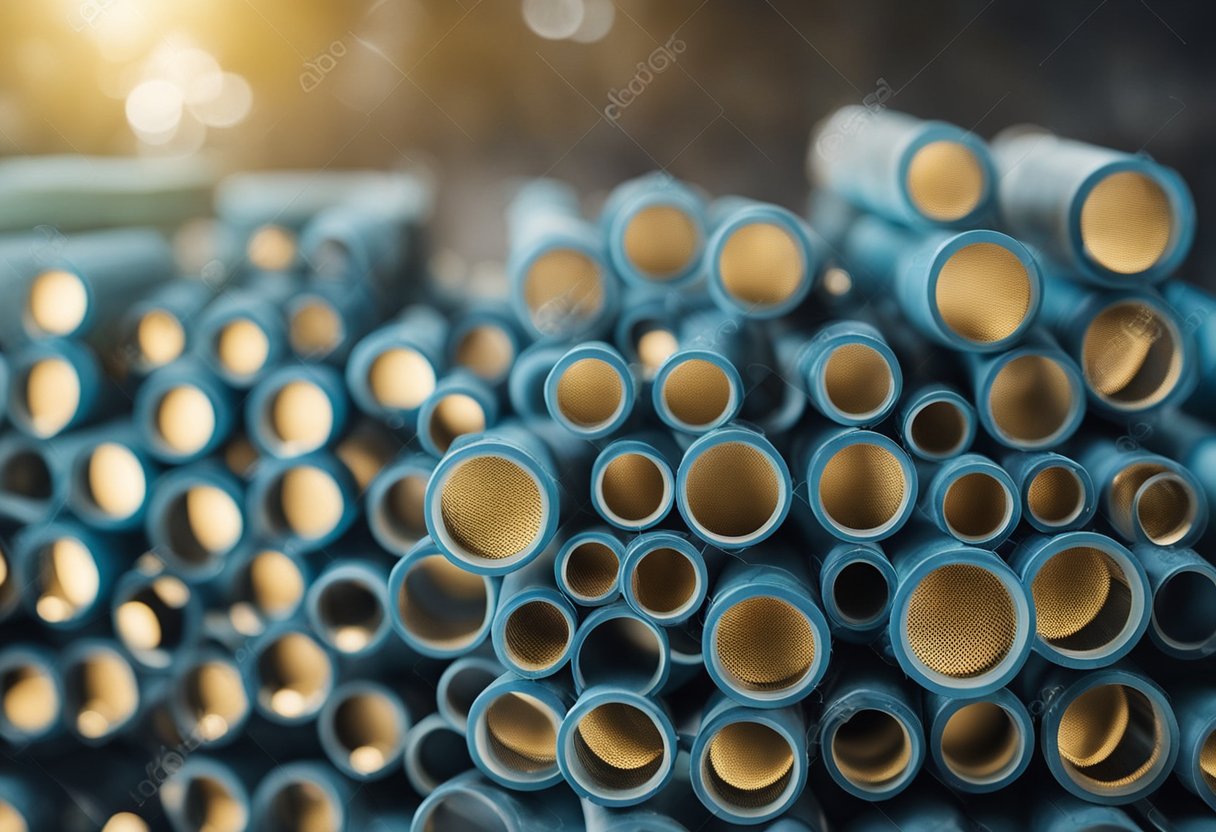Nanotubes, particularly carbon nanotubes, are at the forefront of nanotechnology innovation with a range of applications that have quietly integrated into your daily life. These cylindrical molecules have extraordinary strength and unique electrical properties, making them incredibly versatile. Their use is widespread, from enhancing the materials in your sports equipment to potentially improving the electronics you use every day.

Carbon nanotubes are known for their thermal conductivity, mechanical and electrical properties, making them suitable for building stronger, lighter materials. As a result, they are used in creating durable and lightweight composites that are now found in vehicles, wind turbine blades, and even tennis rackets, affecting the ease with which you carry out sporting or transportation activities.
In the field of electronics, the impressive electrical conductivity of carbon nanotubes has been harnessed in the creation of smaller, faster, and more efficient electronic components. This has led to the development of high-resolution displays and is paving the way for advancements in your personal computing devices and mobile phones, considerably enhancing the performance and user experience without increasing the device size.
Before diving into the applications of nanotubes, it’s essential to understand their key attributes and how they are produced.

Carbon nanotubes (CNTs) are cylindrical structures with diameters measuring in nanometers. The walls of a nanotube are formed of one or more layers of graphene, which is a single layer of carbon atoms arranged in a hexagonal lattice. Single-walled carbon nanotubes (SWCNTs) consist of a single graphene sheet and exhibit remarkable strength and flexibility. Multi-walled carbon nanotubes (MWCNTs) are composed of multiple concentric graphene sheets and can have enhanced mechanical properties.
Nanotubes are synthesized using various methods, each with its own advantages and limitations.
CNTs boast an array of properties that are leveraged in various applications.
Mechanical Properties: CNTs are one of the strongest known materials in terms of tensile strength, due to the strong covalent bonds between carbon atoms.
Thermal Conductivity: These materials possess exceptionally high thermal conductivity, making them ideal for thermal management applications.
Electrical Conductivity: CNTs show significant promise in electronics because of their varied electrical conductive properties, governed by their chirality and defects in the structure.
Attention to the occurrence of defects in the nanomaterials is crucial, as these can alter the strength, conductivity, and overall performance of CNTs. Manufacturers strive to minimize these defects to maintain the intrinsic properties of CNTs.

Nanotubes are integrated into a myriad of applications that permeate your daily life, from the electronics you use to the clothes you wear.
Nanotubes significantly enhance your electronic devices and energy systems with their superior conductivity and strength. In electronics, carbon nanotubes (CNTs) are used to create more efficient transistors, forming the backbone of modern computer chips due to their excellent electron transport properties. They’re also integrated into batteries and capacitors, particularly lithium-ion batteries, to boost energy capacity and reduce charging times.
In health, CNTs have a crucial role in nanomedicine, including tissue engineering and the creation of biosensors that monitor your body’s parameters with unprecedented sensitivity. They help in detecting and filtering out toxic substances like carbon monoxide, methane, and carbon dioxide, directly contributing to environmental safety and reducing your exposure to pollutants.
Your daily interaction with materials is transformed by nanotubes, notably in textiles and fashion, where incorporating CNTs enhances mechanical strength and thermal stability. In engineering, these materials are vital in manufacturing advanced composite materials for vehicles in the automotive, aerospace, and defense sectors. The resultant materials make vehicles lighter, stronger, and more fuel-efficient, also improving safety.
The ongoing advancements in CNT applications suggest they will play a crucial role in the future of multiple industries:
Are carbon nanotubes expensive?
Yes, due to their complex manufacturing process. However, advances in mass production methods like plasma-enhanced chemical vapor deposition (PECVD) are reducing costs.
Can carbon nanotubes be used as armor?
Yes, CNTs are stronger than Kevlar and are being researched for bulletproof vests and military applications.
Are carbon nanotubes used in medicine?
Absolutely! They are used in targeted drug delivery, biosensors, and cancer therapy.
Can carbon nanotubes replace silicon?
Researchers believe CNTs will eventually replace silicon in microchips, enabling faster, more efficient processors.
How are carbon nanotubes used in energy applications?
They improve battery efficiency, solar panel conductivity, and hydrogen storage for fuel cells.
What are the downsides of carbon nanotubes?
Nanotubes are revolutionizing modern technology, and at Gold One Supplies, we’re here to support your innovations. We provide a comprehensive range of lab materials and equipment tailored to your specific needs. From advanced nanotube synthesis to high-precision instruments, our expert team is ready to assist you. Contact us today to learn more about our offerings and how we can help drive your research forward. Remember, no matter how specialized it is, we will supply it.